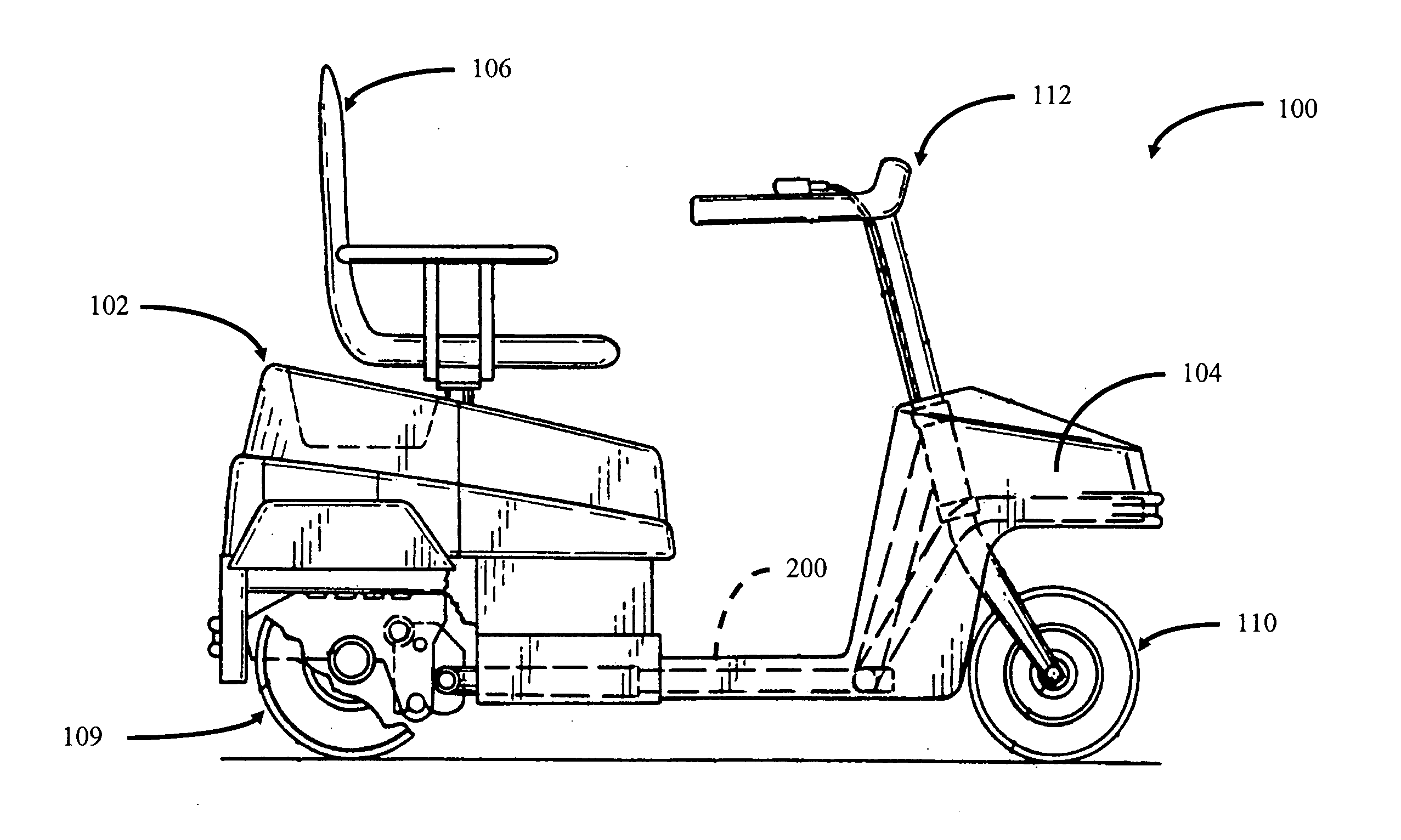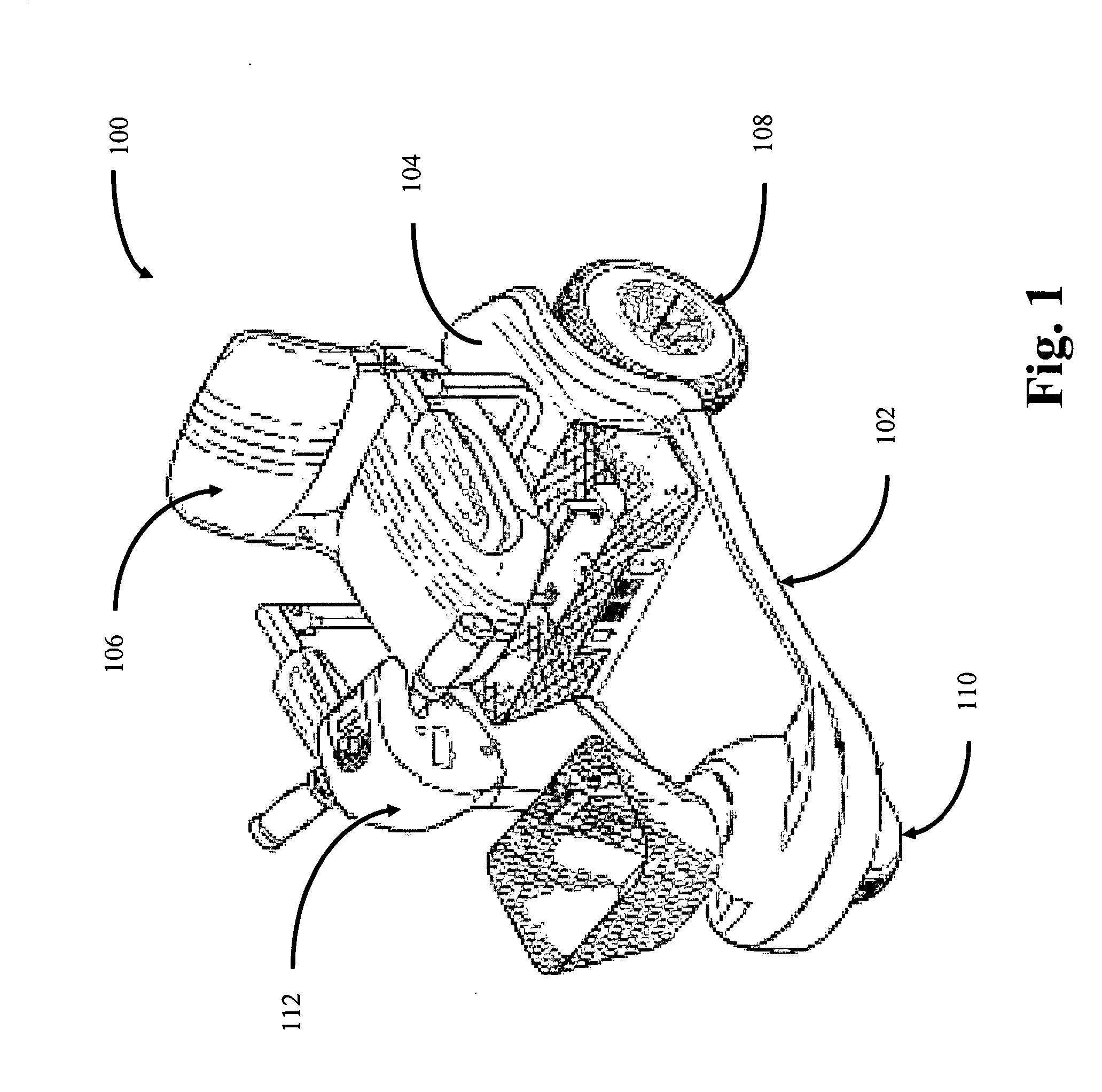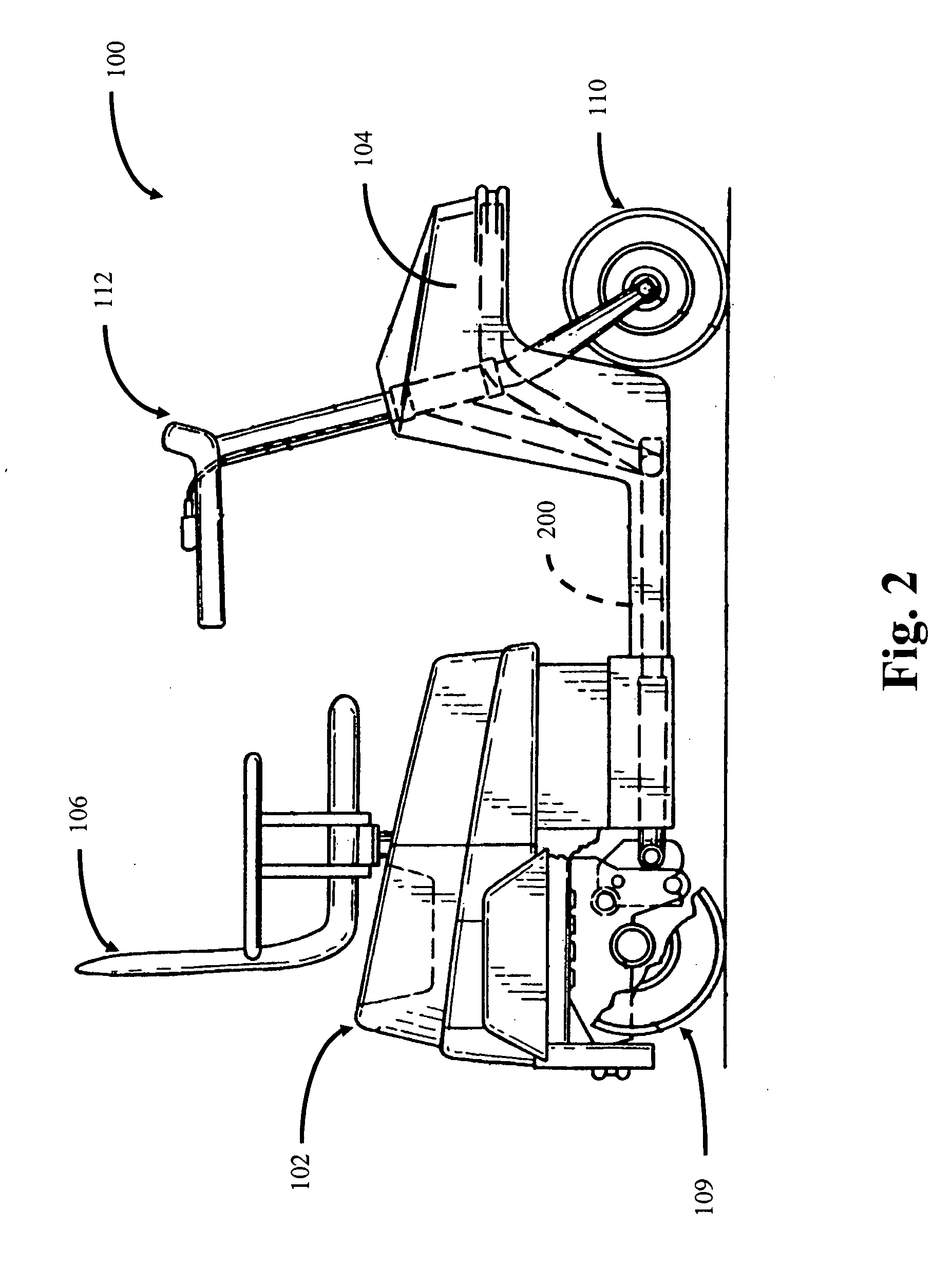Portable mid-wheel drive scooter
a mid-wheel drive, scooter technology, applied in the field of transportation, can solve the problems of less than ideal minimum turning radius of the scooter, less than ideal minimum turning radius of the three-wheel configuration, etc., and achieve the effect of increasing rearward stability and being more maneuverabl
- Summary
- Abstract
- Description
- Claims
- Application Information
AI Technical Summary
Benefits of technology
Problems solved by technology
Method used
Image
Examples
embodiment 500
[0038] Illustrated in FIGS. 5A and 5B is another embodiment 500 that eliminates the torque tube 402, linkages 410, 412, 416, 420 and their associated pivotal connections of FIGS. 4A and 4B. In this regard, a single tie linkage 502 is provided between linkage 406 and bell crank 404. Tie linkage 502 has a pivotal connection 408 to linkage 406 and a pivotal connection 422 to bell crank 404. In operation, the pivotal movement of linkage 406 translates to longitudinal movement of tie linkage 502. The longitudinal movement of tie linkage 502 translates to rotational or pivotal movement of bell crank 404. The rotational or pivotal movement of bell crank 404 is translated to rotation or angular displacement of drive wheels 108 and 109, as already described above. The embodiment of FIGS. 5A and 5B allow for all of the linkages to be placed beneath the vehicle frame.
[0039] Illustrated in FIG. 5C is an embodiment illustrating drive mechanisms of a scooter of the present invention. As illustrat...
embodiment 700
[0047] Referring now to FIGS. 7A, 7B, and 7C, a scooter embodiment 700 having spring-loaded rear casters is shown. The spring-loaded casters prevent the scooter from tipping rearward and flex to allow the scooter to go over bumps and up ramps such as, for example, ramp 706. In particular, scooter 700 is similar to scooter 600 of FIGS. 6A-6D, except that drive wheels 610 and 612 and their associated motors 622 are mounted directly to frame 604 and rear casters 618 and 620 are mounted to composite leaf springs 702 and 704 instead of walking beams or pivot arms. The composite leaf springs 702 and 704 are preferably made from a flexible composite material such as, for example, fiberglass and resin or other suitable composite materials or plastics. Alternatively, composite leaf springs 702 and 704 can be made from a material such as, for example, stainless steel, spring steel or other suitable metals or metal alloys.
[0048] As such, composite leaf springs 702 and 704 have first and second...
embodiment 800
[0049] Illustrated in FIG. 8 is a scooter embodiment 800 having one or more weight-loaded casters, such as caster 820. In this embodiment, seat 624 and the rear caster or casters 820 are mounted to the frame 604 on separate four-bar link systems. When a user sits on the seat 624, a portion of the user's weight is applied to the casters through a laterally projecting tab 806 and caster spring 818. The amount of weight transferred to the caster(s) is dependent upon the strength of the spring 818. A strong spring will transfer more weight than a weak spring.
[0050] As described above, seat 624 is linked to frame 604 by seat post 804 and a four-bar link system having two upper links 814 and two lower links 816. Since FIG. 8 is a side elevational view of the scooter, only one upper link 814 and one lower link 816 are visible. An opposite side elevational view of the scooter would reveal a second pair of identical upper and lower links. In this regard, upper and lower links 814 and 816 eac...
PUM
 Login to View More
Login to View More Abstract
Description
Claims
Application Information
 Login to View More
Login to View More - R&D
- Intellectual Property
- Life Sciences
- Materials
- Tech Scout
- Unparalleled Data Quality
- Higher Quality Content
- 60% Fewer Hallucinations
Browse by: Latest US Patents, China's latest patents, Technical Efficacy Thesaurus, Application Domain, Technology Topic, Popular Technical Reports.
© 2025 PatSnap. All rights reserved.Legal|Privacy policy|Modern Slavery Act Transparency Statement|Sitemap|About US| Contact US: help@patsnap.com



